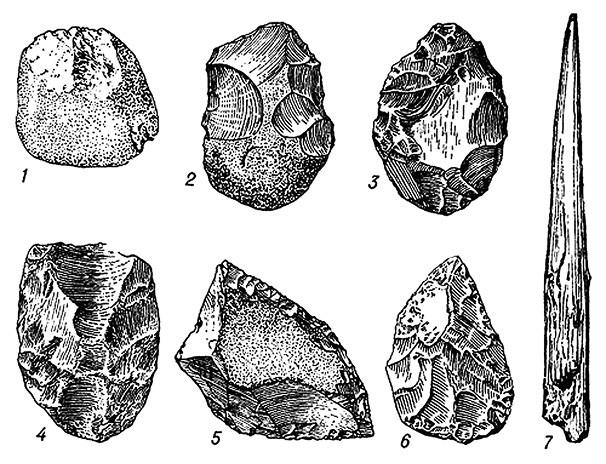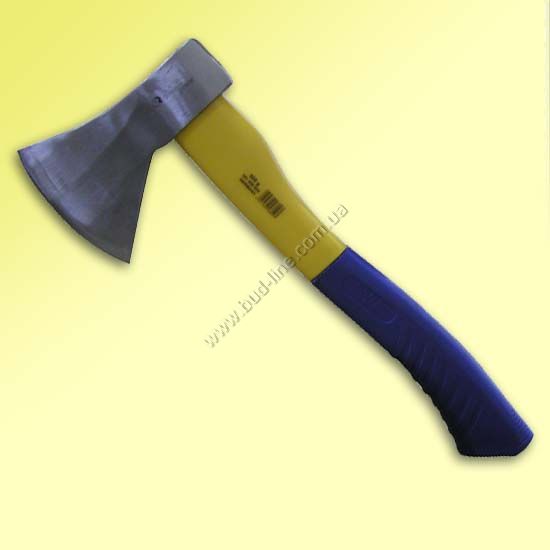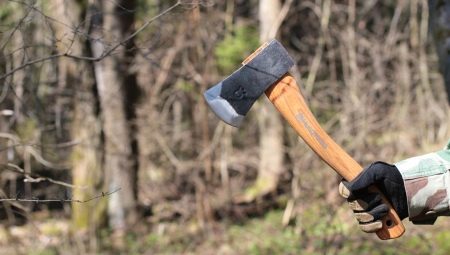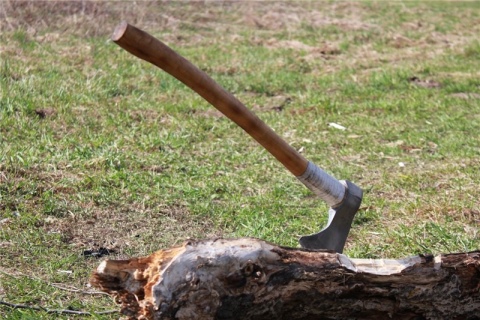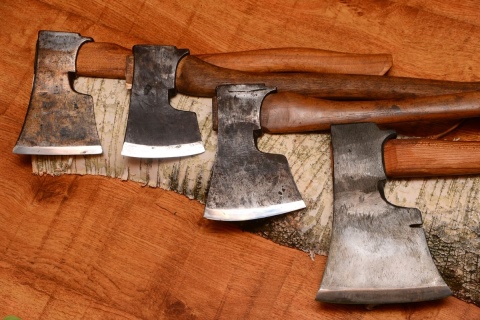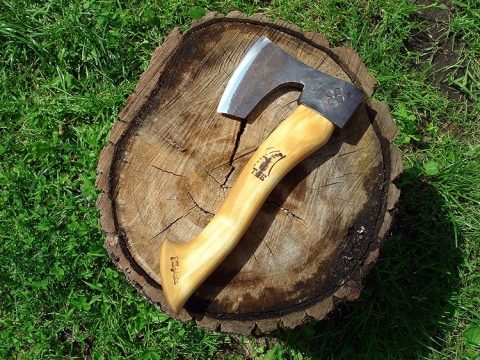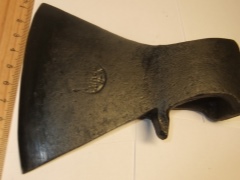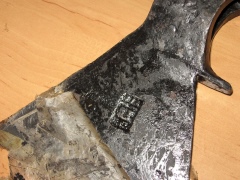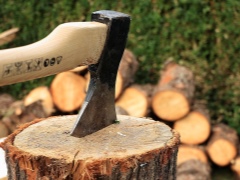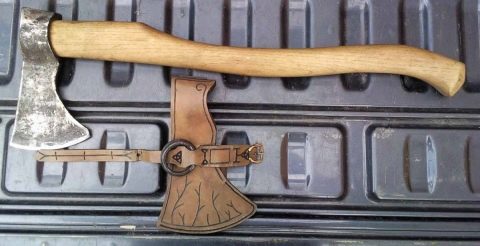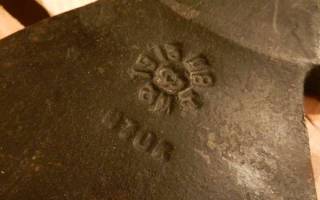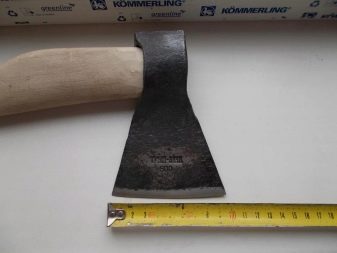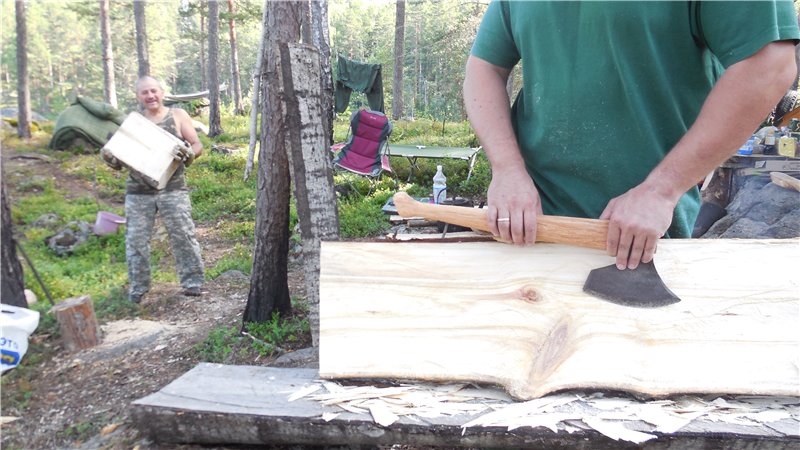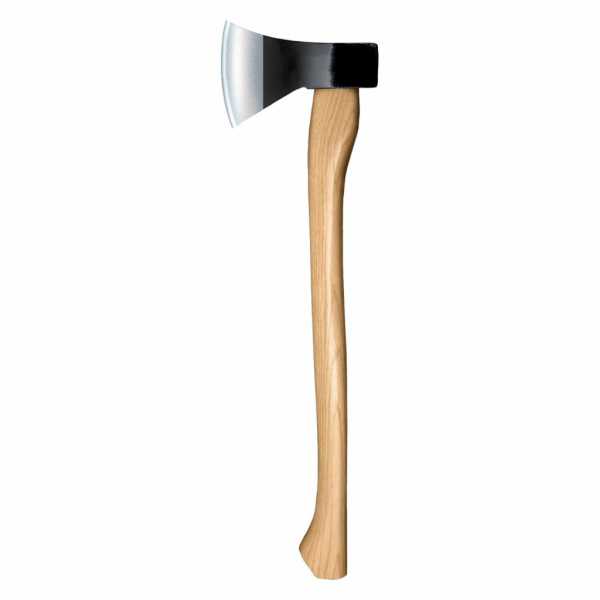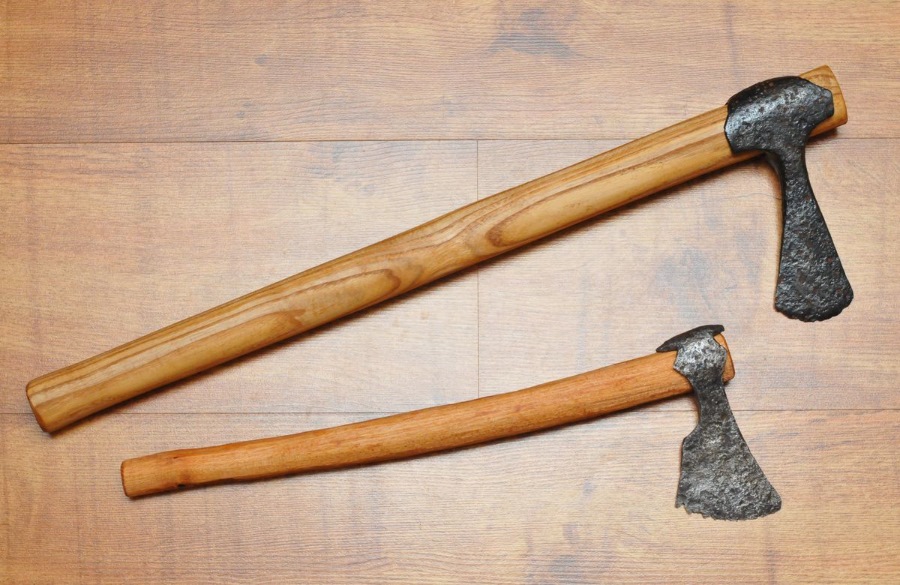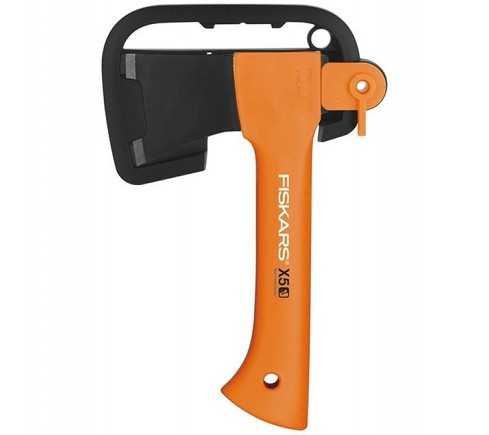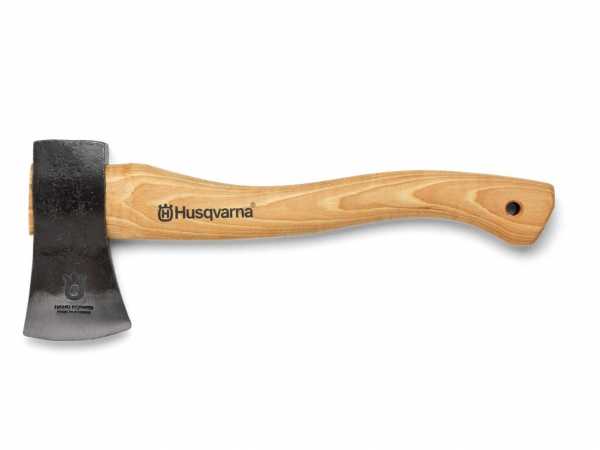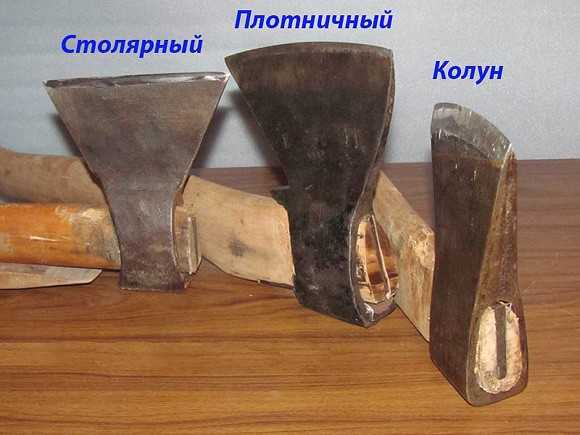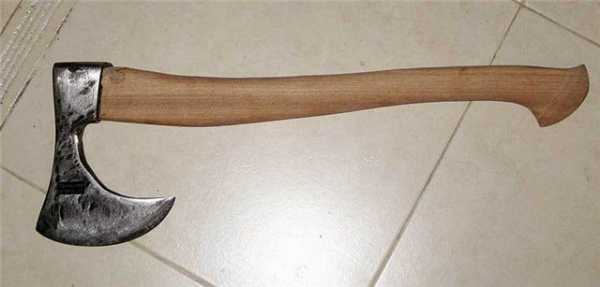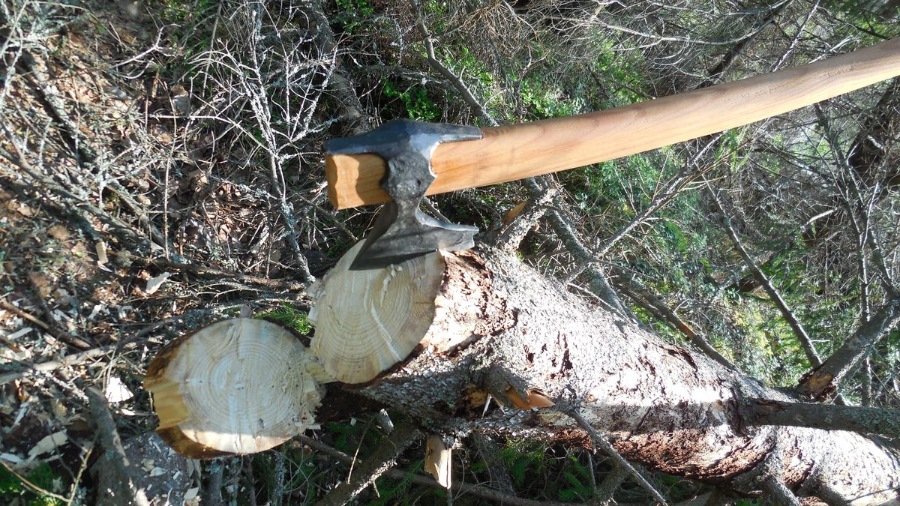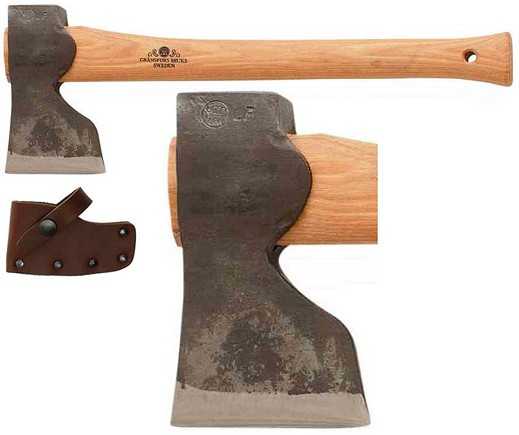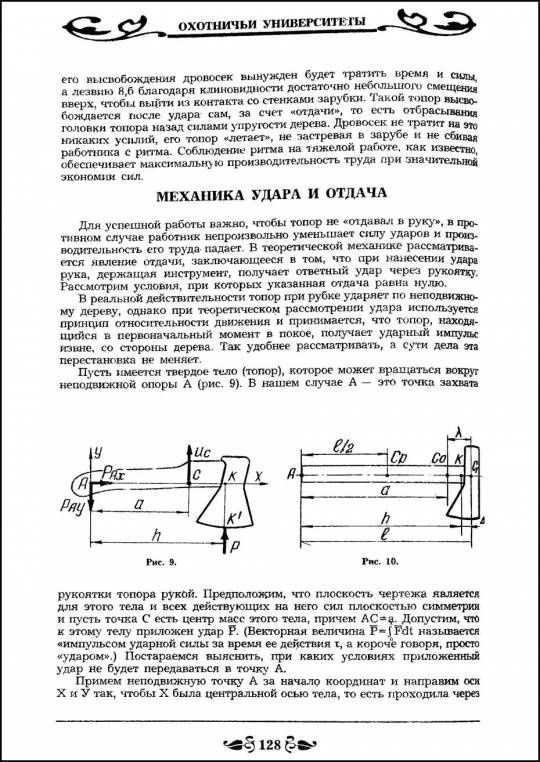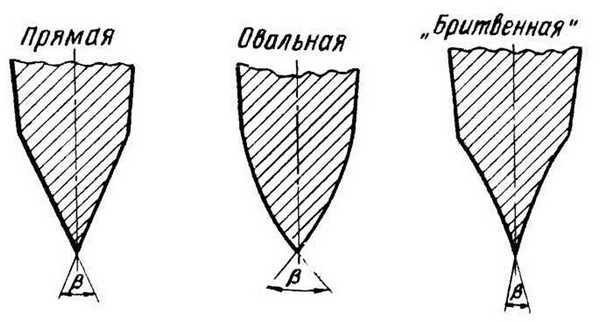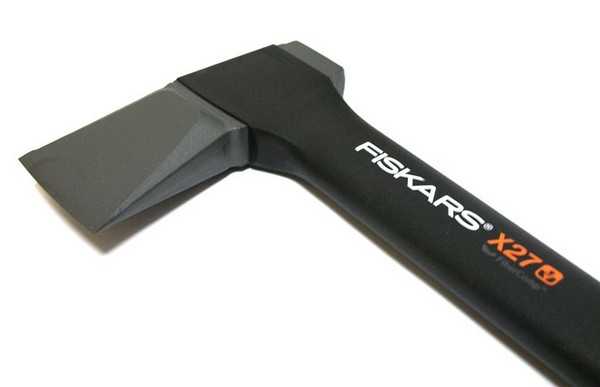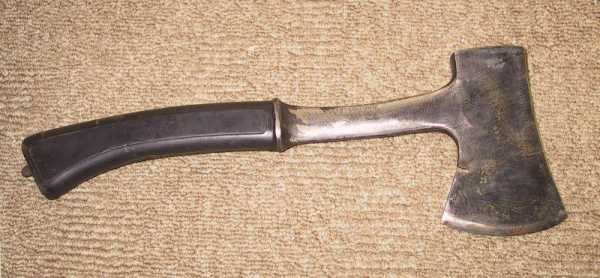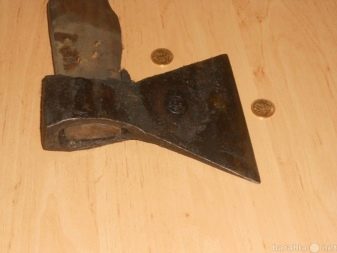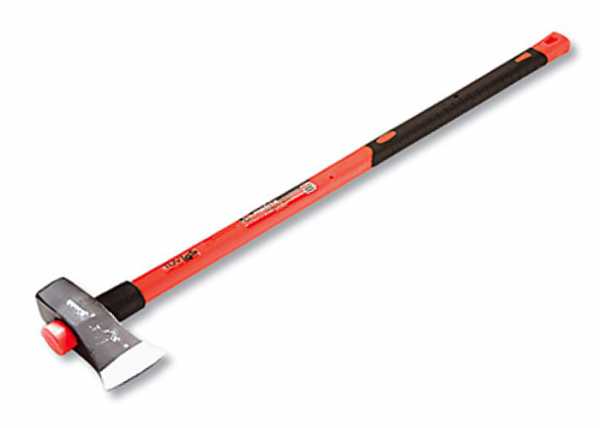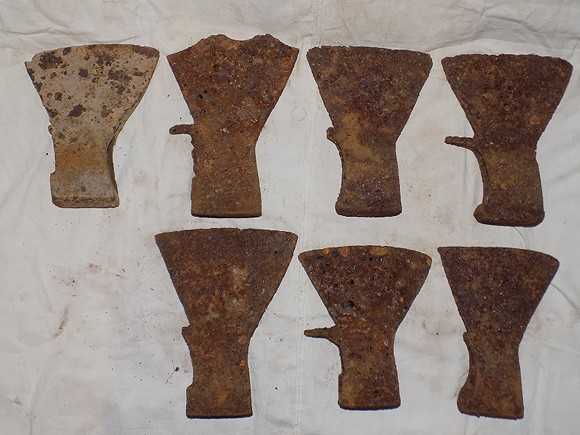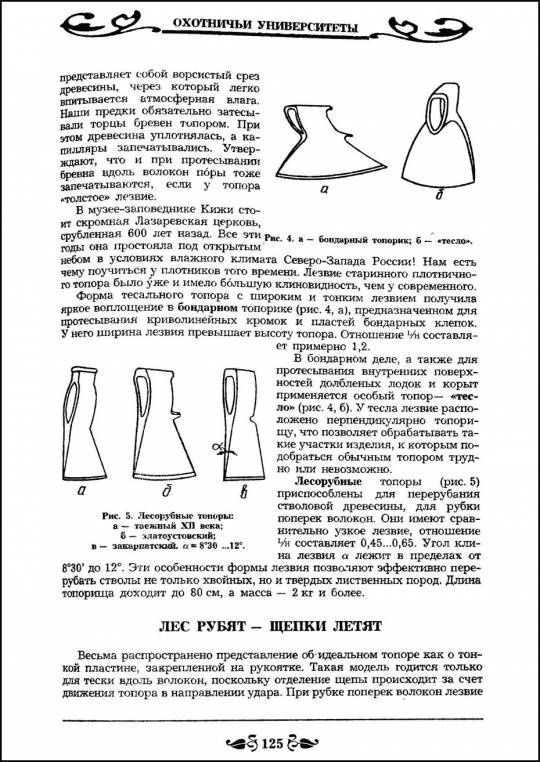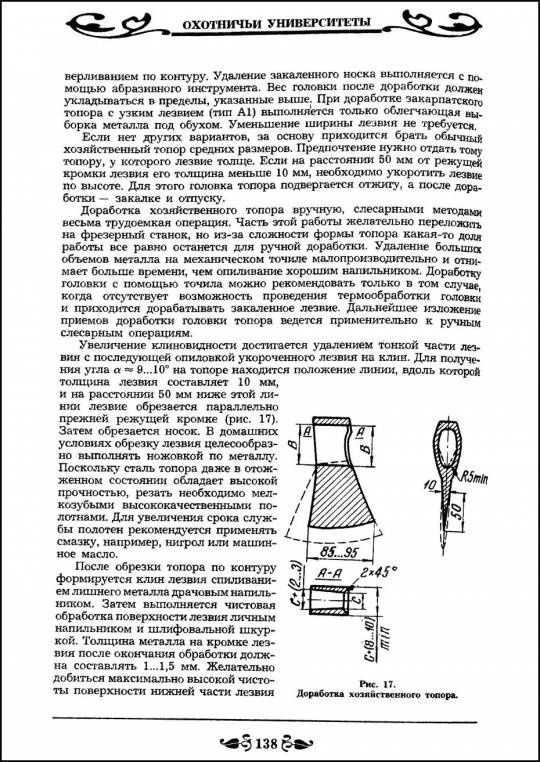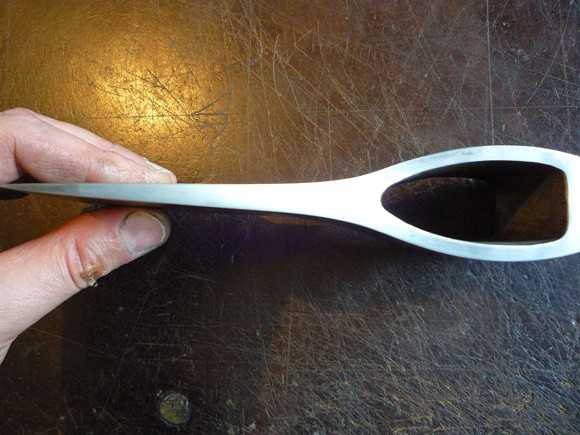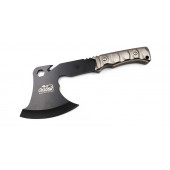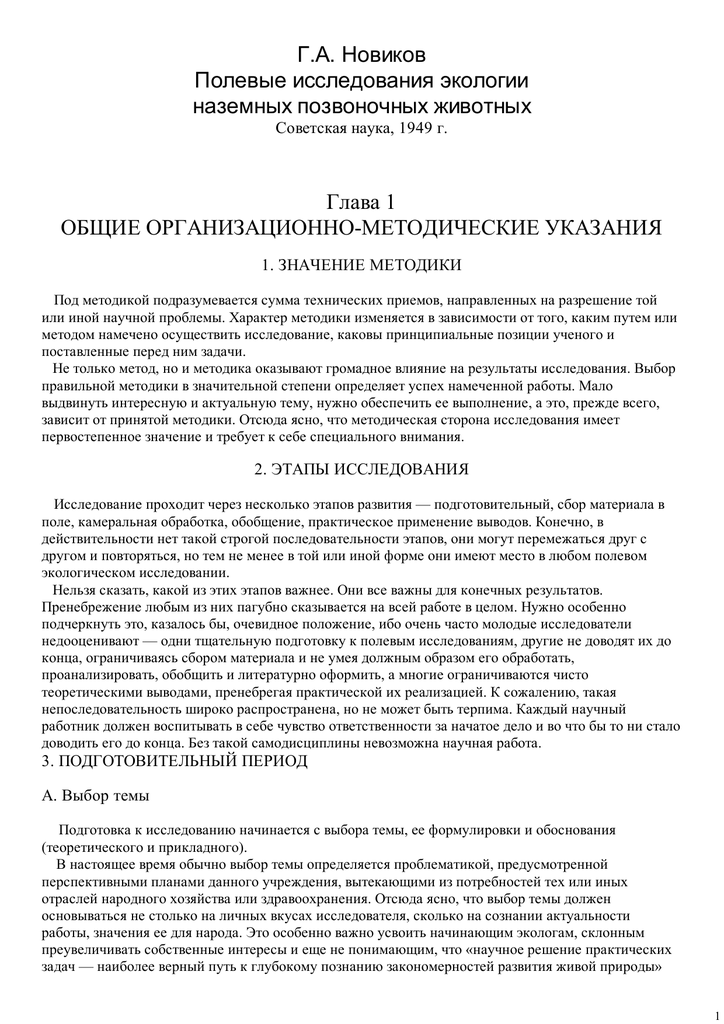Information about Soviet ax manufacturers
Where and who in the country of the Soviets made high-quality axes?
- "Trud" (Nizhny Novgorod region). An enterprise in the village of Vacha began operating in 1830 and was engaged in the manufacture of steel products, in particular, knives. The plant was founded by the Kondratov family, and its management was carried out by several generations of this family. After the revolution, the enterprise was nationalized, and in 1920 it acquired a completely proletarian name "Trud". By the third millennium, the plant had not disappeared, it is still working, continuing to produce axes.
- Izhstal (Izhevsk). The plant was founded in 1760 by Count Shuvalov, one of the first Russian entrepreneurs. Until the XX century it was called "Plant No. 180". Today it is a production association that produces small arms.
- GPZ - Bearing Plant No. 1 (Moscow). The developers presented the project of the enterprise in 1929, and its construction was completed in 1932. Became a pioneer in the production of ball bearings. During the Great Patriotic War, the plant was evacuated beyond the Urals, where it continued its activities for the needs of the front. The enterprise worked hard during the Soviet era, and has retained its production capacity to this day.
- Combine in Zlatoust (Chelyabinsk region). Created by the industrialists Mosolovs in 1754. Initially, he was engaged in smelting cast iron and iron. At the beginning of the 19th century, the plant was combined with three others to create one arms factory. During the First World War, the company was temporarily closed. After 1917, he was nationalized. In 1939, it was renamed the Zlatoust Instrumental Plant, which was disbanded after the collapse of the USSR due to bankruptcy.
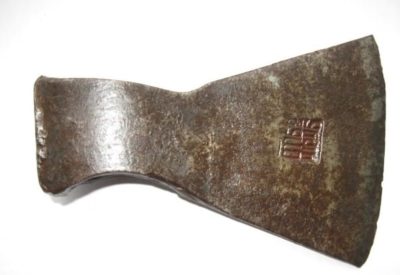 Stamp on the ax
Stamp on the ax
How to choose?
When buying an ax of the Trud brand, it is worth taking into account several main points.
- The user should make a detailed inspection of the working surface of the tool. It is best to choose alloy steel, since it is considered the most reliable, although unalloyed and even tool steel will do.
- From the form, you can quickly determine for what purposes a particular model is intended. Cleavers have a thick wedge and a long handle that allows you to make a large swing and concentrate all the applied force on the log at the point of contact of the ax with the tree. Touring, carpentry and classic axes have a medium blade.
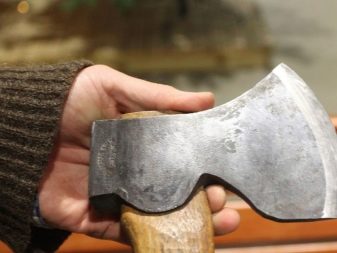

The rounded edge on the cutting part of the tool allows not only stabbing, but also cutting, which is important when performing carpentry work. A well-sharpened blade will more easily enter the wood, but it is less durable
If it is supposed to cut large logs, then the sharpening angle should be 30 degrees.
Pay special attention to the ax, preferably if it is made of hardwood such as birch
Oak, ash are also suitable, since these are dense species that absorb shock well, resulting in minimal recoil
The fibers on the handle should be arranged along the length, because only then will such a handle not burst over time.
The ease of use of the ax will depend on the weight of the tool - the lighter it is, the more blows will have to be applied to cut off a twig or chop a log.
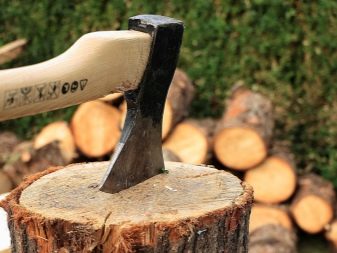
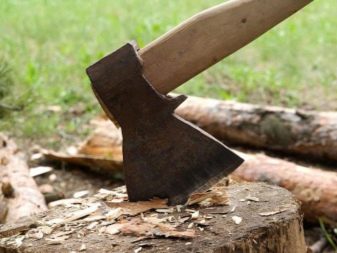
For an overview of the Trud ax, see the next video.
Varieties
Any ax is used to work with wood. It can be a small-sized model for hunting or tourism, a tool for giving or doing carpentry work.
Classically shaped products are used for cutting across the grain of wood, as well as for felling trees.Such a device can be made with a single or double cutting edge. For splitting, another tool is used, in which the head has the shape of a pointed wedge.
Splitters are used to harvest firewood, since they allow you to split large logs in which a conventional ax gets stuck.
Standard
The group of standard axes includes:
- carpenter's ax;
- cleaver;
- carpenter's ax.
The working surface of such a tool is usually limited by a bit (blade) at one end and a butt at the other, although some designs have two bits opposite each other or a pickaxe on one side.
The top corner of the bit, where the cutting edge starts, is called the toe, and the bottom is called the heel. Either side on the sides is the cheek, which is sometimes complemented by ears. The part of the blade that goes down below the rest is called the beard. Although it is an outdated shape, it is sometimes still used because it has an elongated edge that is twice the size of the rest of the blade.
A carpenter's ax is used to work with wood chips. Its thin blade, sharpened at an angle of 30-35 degrees, easily penetrates wood bars, but only if they are not very thick. It is larger than the carpentry and weighs about 1.5 kg. Particular attention is paid to its sharpening, as it must be very sharp in order to be able to sand without difficulty.
A carpenter's tool is usually operated with only one hand, so its weight reaches 700 g. It is a small but convenient design. In its shape, the tool is very similar to a carpenter's one, only its sharpening angle varies from 18 to 20 degrees. The blade may have a thin section, and the butt should not be massive.
In a separate group there are massive cleavers, which are distinguished by their high weight and handle length. It is the handle that allows you to make the maximum swing and hit the log with maximum force. Such a tool is used exclusively for chopping wood. Its weight can reach 4 kg.
Specialized
The following tools can be included in the specialized tool category:
- tourist;
- for felling timber;
- for chopping meat;
- for hunting;
- fireman.
A hiking ax is always a small, lightweight tool designed to be used in one hand while camping or traveling. The design may include a hammer. If the models are with a hammer, then they allow you to use the ax as two useful tools. Such a product is usually sold in a compact size with a protective case.
A tourist ax weighs up to 500 g, sometimes there is a free cavity in the handle for storing small items. At the end of the handle there is a hole through which a string is threaded so that you can hang the tool in a convenient place or even on a belt.
The meat ax has a unique blade shape. The fact is that when working with this material, the tool gets stuck in the bone, quickly becomes blunt, so sharpening plays an important role. Such axes are made with the shape of forging under a razor, the blade is sharpened under the lens. Thus, the blunt base quickly breaks bone, and the razor shape makes it easy to penetrate the flesh. The weight of the structure is about 3.5 kg.
A fire ax is a specialized tool that has special requirements prescribed in the standards. This product comes on sale with a quality certificate and has a short service life - only 18 months, since it can withstand a huge load and at the same time must remain strong and reliable.
Fire axes can be with a pickaxe on the other side of the blade or with a sledgehammer. The first feature allows a firefighter to quickly break the lock or stay on the roof, and the second - to break down a dense wall.
The hunting ax is used for butchering meat carcasses, so it is small in size. The weight of the structure is no more than 700 g, and its length reaches 400 mm.As a rule, these are all-metal products with a rubberized grip on the handle, which simplifies the process of working with the tool.
A felling tool has the main difference - the edge has a thin thickness, but with a wide, thick blade. This design helps to penetrate the wood across. The best option when the product has a flat, elongated blade with rounded edges. This shape makes it easy to penetrate wood fibers.
Advantages and disadvantages
The high demand for Fiskars cleavers in the world market is due to a number of important advantages of this tool.
- Thanks to the double hardening procedure, the cleaver blade is very durable, which allows you to work with wood of any species without fear of damaging the working surface of the tool. In addition, the Teflon coating, which reduces friction by a quarter, allows you to easily remove the cleaver from any, even the narrowest crevices in the wood.
- Cleavers have a rather long service life and can be used for 10 or more years. This is due to the stamped-forged method of their manufacture, as well as the use of only high-quality modern raw materials.
- Compared to most forged counterparts equipped with wooden axes, the Fiskars are lightweight and well balanced. In the process of developing the cleavers, all the subtleties of the process of harvesting firewood were taken into account and the safest design for use was created.
- All Fiskars cleavers are equipped with a protective plastic sheath that reliably covers the blade. This makes the tool completely safe during transportation and storage.
Judging by the numerous reviews, no technical flaws were found in the Fiskars cleavers, and the only disadvantage consumers consider is the high cost in comparison with domestic stamped models. However, due to its ease of use and durability, the product ultimately pays for itself.
Design
Let us dwell in more detail on the design features of the taiga ax. It includes several details.
The hatchet is quite strikingly different from the carpenter's. In taiga models, it is much longer, because with its help you need to make a strong swing and hit the wood sharply. The standard length is 50 centimeters or more, while it must be light, otherwise you simply cannot survive in the taiga.
The head of a taiga ax is also unlike that of a carpenter's; the upper part of the blade is completely absent here. In addition, the head forms a much smaller angle of inclination in relation to the hatchet - 65 degrees compared to 90 degrees for the carpentry version. Thanks to this feature, the efficiency of the work increases, and the hands do not get tired, which generally increases the efficiency of felling. The blow is harder than with a carpentry tool.
The blade must be rounded, sharpening has its own characteristics: as a rule, the trailing edge is 2.5 times thinner than the front
This is extremely important if you plan on using an ax instead of a cleaver.
Barb - the element connects the ax to the head. It is designed to protect the wooden part from breaking in the event of strong impacts, since it absorbs up to 60% of the force of physical impact.
Butt - as you know, in the taiga you need not only an ax, but also a hammer, but many use a butt instead, which quite easily copes with all the tasks assigned to it.
Eye - thanks to this part, the head is put on the hatchet, a wooden wedge or a simple nail is additionally driven inside, so the head does not jump off.
Fungus is another detail aimed at increasing the safety of using the device
On the fungus, you can quite conveniently fix your hands so that they do not slip.
Types of products
The brand produces not only classic axes, which are necessary in the household, but also cleavers, tourist products. Each model has its own distinctive features, for example, a tool that is used for hunting or outdoors, has less weight and dimensions. The main requirement for a tourist hatchet is that it does not add a lot of weight, does not take up additional space, but at the same time retains the necessary functionality.
Splitting axes are a separate category, which is distinguished by a thick wedge-shaped metal part. This shape is necessary to break up large wood, and if the blade was thin, it would get stuck in the middle.
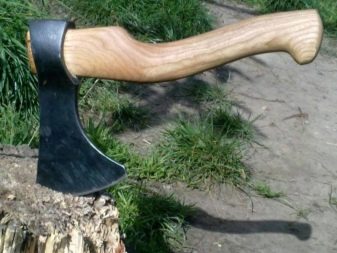
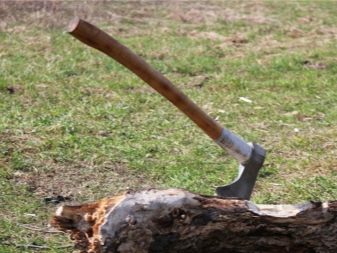
Advantages and disadvantages
Popularity hand forged axes work is explained by a number of their advantages over tools made in other ways.
- The quality of forged models is much superior to the quality of stamped and cast ones, which is due to the technology of multiple forging and metal hardening.
- The hatchet is always suited to the purpose of the ax and is often custom made.
- In addition, only high-quality wood is used for the manufacture of the handle, which excludes its splitting under the influence of heavy loads.
- And also, many professionals note the excellent attachment of the ax to the shaft, which allows you not to worry about it falling off the ax during the chopping process.
- Another significant advantage of forged models is their durability. Such a tool is capable of serving for more than a dozen years and is often inherited from grandfather to grandson.
However, like any other tool, forged axes still have drawbacks. First of all, they include a high cost, which is explained by manual work, which has always been expensive. In addition, blacksmiths sharpen each specific model exclusively for a specific type of work, and in order to use it for other technical tasks, the blade will need to be resharpened. The next significant disadvantage is the risk of purchasing a product of low quality, during the manufacture of which the metal was not finished or overheated.
To protect yourself from purchasing such a product, you should use the services of experienced professional blacksmiths who value their reputation and bear personal responsibility for each product they make. Another significant drawback of a forged ax is the need for proper sharpening. A forged blade cannot be sharpened by conventional metal grinding: in this case, a fine-grained grinding wheel is required along the forged edge. Even more difficult to sharpen are patterned blades that should only be handled by professionals.
Brands
Let's take a look at the most popular Swedish brands.
Hultafors
The most famous of them. The enterprise began operating in 1883. The engineer Karl-Hilmer Johansson Kohlen invented and manufactured a folding measuring instrument. His invention was in demand during the transition of the country to the metric system of measurements. The company was engaged in this direction until the 70s of the last century. After the company was bought out in the 90s, the range of goods was expanded, including axes.
The company produces products for carpenters, lumberjacks, hunters and tourists. There are cleavers, throwing axes.
Gransfors Bruks
The company is famous for the high price and the same quality of the tool. The company has been operating since 1902.
The company guarantees that the forged ax will last about 20 years. To do this, you will have to follow simple operating rules, to sharpen it on time.
Wetterlings
The history of the brand began in 1882. Engineer Otto Weterling lived for several years in the United States of America, mastered the production of axes. Now the company employs 10 employees, producing universal products for hunters and carpenters.
Tools for lumberjacks are produced separately. Steel of the Swedish company Ovako is used.It is the leading manufacturer of long products in Europe.
Hults bruk
The history of the brand began in 1697. Now the company produces two types: an army ax and products for civilian needs. There are 13 models in total.
The tools have forged blades and hickory handles. Blade weight from 0.6 to 1.7 kg. Prices range from $ 89 to $ 379.
Husqvarna AB
It is considered the largest producer in the country. The roots of the story go back to 1689. The company was engaged in the production of logging tools. Known all over the world for chainsaws. At one time, the axes for her were produced by the Wetterlings company. Husqvarna AB now manufactures its own products.
The only difference from other Swedish brands is that they are based on the American-Canadian forms. The product has a trapezoidal shape.
Among other Swedish manufacturers, the SAW brand can also be distinguished. The manufacturer produces forged products for tourists.
Bahco follows the same line. Uses American White Walnut for handles.
Manufacturing instructions
And when you do make up your mind, a new question will arise: how to make a manual cleaver? It is not particularly difficult to make it. Make the handle bent, the section - ovoid. Harvesting wood for the handle should be started in the fall, so that it dries up and does not crack during the winter.
And while it dries, it's time to create a cardboard template. Draw a large shape for the handle and then transfer it to the workpiece - this will make the handle more precise. Cut a piece of wood parallel to the fibers, and the place inserted into the eyelet should be wider than the middle. Circle the drawing, leaving gaps.
Insert the upper part into the eyelet, remove unnecessary parts. Before cutting the handle, make longitudinal cuts that do not reach 5 mm before the handle. Make transitions, corners using a rasp. Bring the finished workpiece to a smooth state.
Now you need the splitting part for the ax. It is unrealistic to make it, so when buying, look at: GOST markings, a cone-shaped hole under the hatchet and a perfect blade without flaws. And you can start assembling. Cut the upper part of the ax longitudinally and laterally.
Then you will need five carved pieces of wood. Wrap a piece of gauze soaked in resin around the top of the handle so that it slips into the hole in the blade more easily and hammer it in with a hammer. Drive the chopped five pieces into the cutouts made at the top. When the product dries a little, cut out the interfering parts and remove the gauze.
And the final touch is a properly sharpened blade. After all the work, you should have a neat hatchet, ready to go. In the photo, a homemade cleaver will look just like a purchased one.


